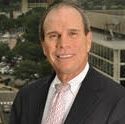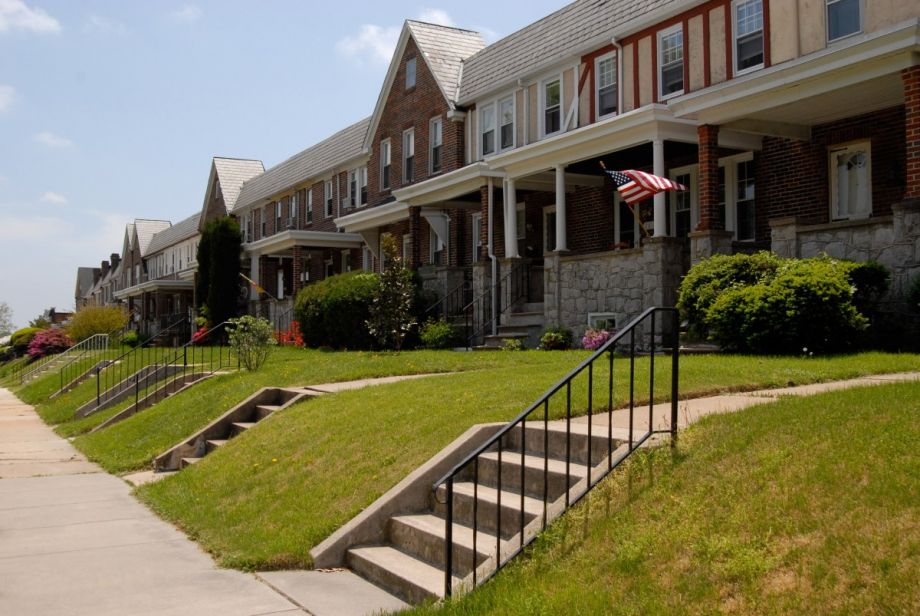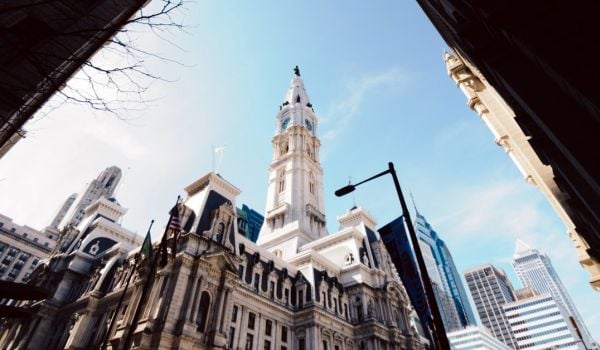The recently-released Opportunity Atlas provides fresh evidence that neighborhoods — even blocks within neighborhoods — are determinants of children’s life chances, even when families have similar incomes. Similarly, the Neighborhood Life Expectancy Project shows how disparities in health, block by block, are based on neighborhood conditions.
These new reports are a reminder that the streets we call home — even more than the cities, counties, towns and suburbs we live in — are major predictors of quality of life and life opportunity. Given this growing understanding of how neighborhoods affect life outcomes, why aren’t more policymakers, civic and private leaders turning their attention to them?
One important issue gaining traction in urban policy discussions is the critical role of middle neighborhoods, which may be the most overlooked asset in today’s cities and suburbs.
Like Goldilocks tasting porridge, middle neighborhoods are not the strong, pricey places with fast appreciating housing markets (too hot); nor are they full of vacancies, distressed buildings and very low housing prices (too cold). Instead, middle neighborhoods are those just-right places where home prices are generally affordable to the average household. But, these neighborhoods are often on the edge between growth and decline. Despite the fact that they are a source of naturally occurring affordable housing [NOAH], and that they have played an important role building opportunity and prosperity for their residents, this category of neighborhoods gets barely any attention.
Middle neighborhoods house a third to half of urban America in the cities we’ve examined. Many are home to predominantly African-American families, such as Greater Chatham in Chicago, Belair-Edison in Baltimore and Lee Harvard in Cleveland, while others such as Slavic Village in Cleveland trace their roots to Eastern European immigrants. Many others are among the most racially and socioeconomically diverse in the nation. These are neighborhoods that were once in proximity to jobs, which is why they have historically housed working-class and middle-class families.
Today, many of these neighborhoods fight to avoid decline because they are no longer near jobs, and, in many cases the existing housing is now less attractive to important market segments than it once was. Given the narrow market and the scarcity of capital for owners to upgrade these homes, as well as a housing market that favors new construction, many homes in middle neighborhoods struggle to compete for buyers.
In recent decades, these places have been largely ignored. Many of us have seen and read the economic and demographic trends for years: the loss of our middle class, the economic and racial segregation of our neighborhoods, the decline of decent jobs with growth ladders. Yet we have failed to take assertive action to protect these neighborhoods, which are more diverse than many others and which house modest-income Americans.
Two years ago, The American Assembly, a national policy institute at Columbia University, published On the Edge: America’s Middle Neighborhoods, in partnership with the San Francisco Federal Reserve Bank. The book highlights the challenges facing middle neighborhoods and the many local efforts underway to keep these neighborhoods from falling into decline in weak marketplaces such as Baltimore and Cleveland, and from gentrifying in strong market cities such as the San Francisco Bay Area and Washington, D.C.
In the wake of the book’s rollout, a growing number of practitioners, advocates, lenders and community-based organizations are sharing their experiences and insights about how to take purposeful steps that safeguard their middle neighborhoods. Mayors, city councils and planning directors are taking notice, and in some instances even leading the way. The rationale is simple: because middle neighborhoods provide a substantial portion of property tax revenues, local governments must take action to stabilize them to protect the tax base. Their efforts are aimed at preventing decline — a danger in many cities — and the dramatic loss of home equity when property values decline or do not keep abreast of inflation.
The learning that has occurred in the past two years is very heartening. There are successful efforts in some cities to strengthen these neighborhoods by building more capacity within the neighborhoods, marketing these hidden gems to market segments that have been ignoring them and retrofitting homes to make them more attractive in today’s markets.
-
The Healthy Neighborhoods Program in Baltimore has been working for 15 years to stabilize 42 middle neighborhoods in that city through a loan pool of mostly private lenders. Careful and routine measurements of market data indicate that most of Baltimore’s middle neighborhoods, threatened with decline, have stabilized. The most problematic neighborhoods are those with weak market demand. Only two neighborhoods have recovered through a change in neighborhood character, namely through millennials moving in. Most neighborhoods are attracting buyers who are much like those already living there. A similar program, operated by the Greater Milwaukee Foundation, shows similar success.
-
Philadelphia City Council passed legislation allowing for a new home repair loan program that has income limits high enough that residents of middle neighborhoods can use the program to improve their homes. This public capital is needed because the conventional housing finance system does not offer rehabilitation finance to homeowners who have little or no equity in their homes. This serious market failure is being addressed through Philadelphia’s program, but much more home improvement capital and capacity is needed in these neighborhoods.
-
In late September, the Des Moines City Council introduced a multimillion-dollar pilot for four neighborhoods, which if successful, will be rolled out citywide. The aim is to make improvements and stabilize property values in places where the housing market is neither strong nor weak but could begin to struggle if there is more blight.
These independent efforts are now finding each other through a middle neighborhoods Community of Practice. This peer-driven self-help group of practitioners is helping to focus attention on two of the most important issues driving middle neighborhood stabilization efforts: boosting the capacity of practitioners and local community-based organizations and finding ways to increase access to financing.
We have been encouraged by the growing attention to this class of neighborhoods and the work underway in a growing number of cities to use “an ounce of prevention” to keep these neighborhoods from falling into decline or gentrifying uncontrollably. State and local governments play a key role, as does the private sector, including major local institutions, such as hospitals, colleges and universities.
But they cannot do it alone. The stakes are too high. These neighborhoods need attention if they are to remain capable of fulfilling the needs of tomorrow’s generation.
This op-ed is part of Next City’s Middle Neighborhoods series, supported by a grant from The American Assembly. Follow our coverage as we dig into the solutions and success stories that animate the conversation today.

Paul C. Brophy is a principal with Brophy & Reilly LLC, a consulting firm specializing in inclusive economic development and neighborhood improvement in legacy cities; the management of complex urban redevelopment projects; and the development of mixed-income housing communities. Mr. Brophy has directed three projects for the American Assembly, where he is a senior advisor. In 1997 Mr. Brophy led a project that resulted in a widely-read report, “Community Capitalism: Rediscovering the Markets of America’s Urban Neighborhoods.” In 2007, he conducted a project that produced the report, “Retooling for Growth: Building a 21st Century Economy in America's Older Industrial Areas. And, in 2011, he co-directed a meeting that led to the report, “Reinventing America’s Legacy Cities: Strategies for Cities Losing Population.” Brophy is also a senior advisor to Enterprise Community Partners and is an adjunct professor at Georgetown University’s School of Urban and Regional Planning. He was previously a Non-Resident Senior Fellow at the Brookings Institution, a Senior Advisor to the Center for Community Progress, and a Senior Scholar at the George Warren Brown School at Washington University in St. Louis. Brophy edited “On the Edge: America’s Middle Neighborhoods” (2016), and is co-author of three books: “Neighborhood Revitalization: Theory and Practice” (1975); “Housing and Local Government” (1982), and “A Guide to Careers in Community Development” (2001).
.(JavaScript must be enabled to view this email address)

Frank Woodruff is executive director of the National Alliance of Community Economic Development Associations. He joined NACEDA in September 2010, becoming executive director in January 2012. During a time of significant political and economic challenges for community development, Frank saw this as an opportunity to take NACEDA to a new level of success and sustainability. He believes community and economic development will be a critical tool for those communities and neighborhoods that are organized, demanding, and capable of instituting change. He holds a Master’s Degree in Public Policy from The George Washington University. He also has a B.A. from the University of Wisconsin-Madison. His publications include: “The Mortgage Interest Deduction: an Example of Upside Down Federal Government Housing Subsidy,” and is co-author of two essays entitled “Redlining,” one in The American Middle Class: An Economic Encyclopedia of Progress and Poverty due to be published in 2015 and the other in The Wiley-Blackwell Encyclopedia of Urban and Regional Studies, due out in 2016.
.(JavaScript must be enabled to view this email address)




_600_350_80_s_c1.jpg)











